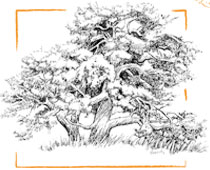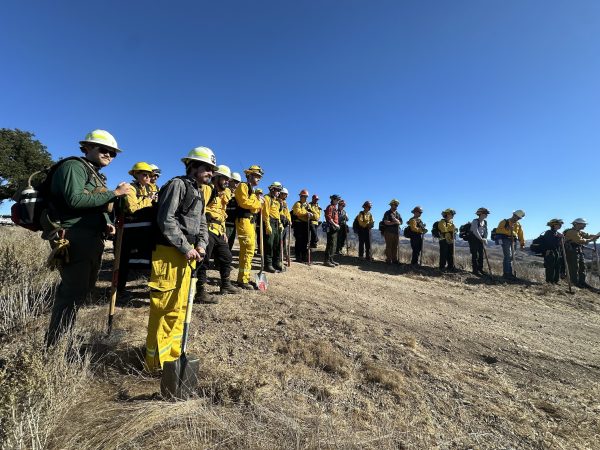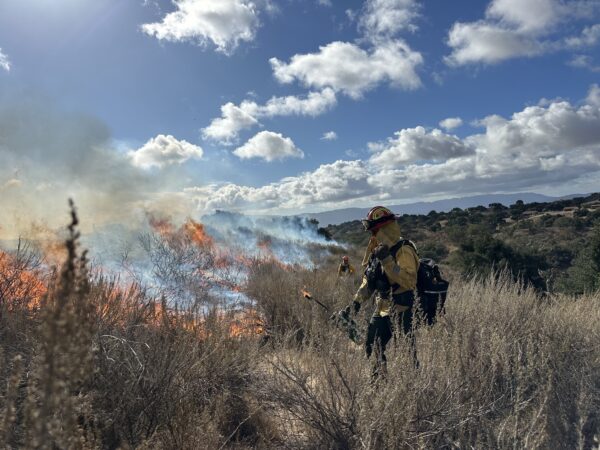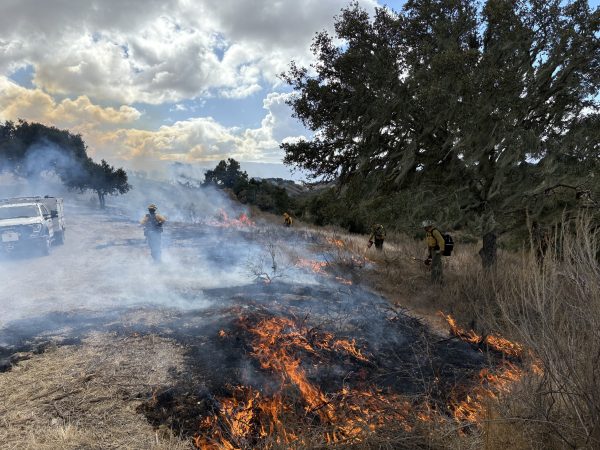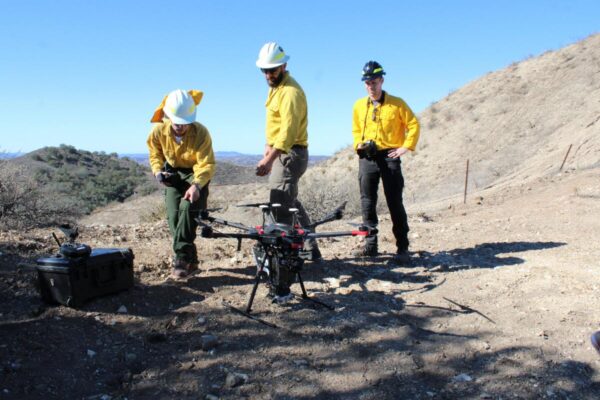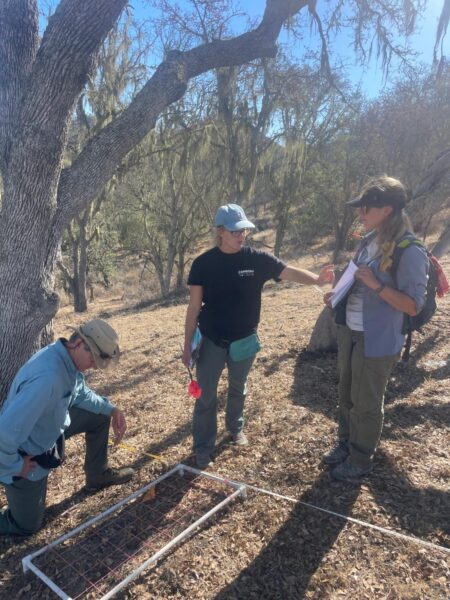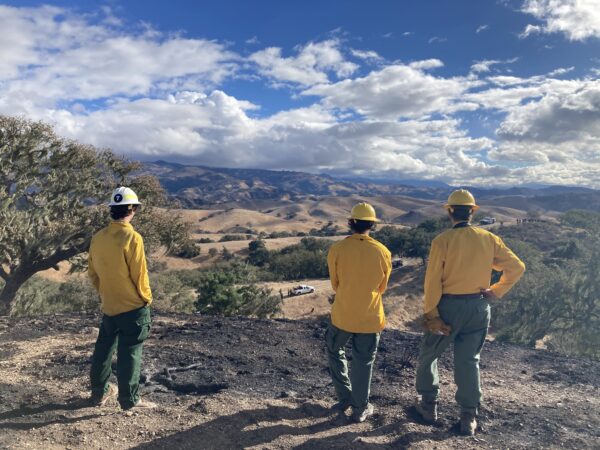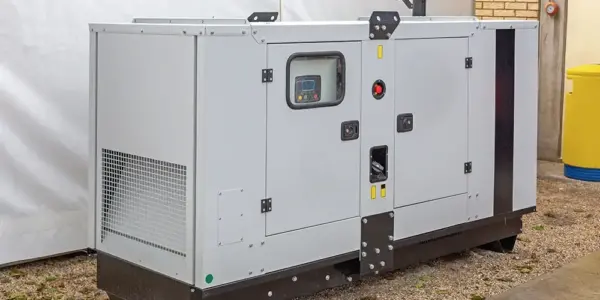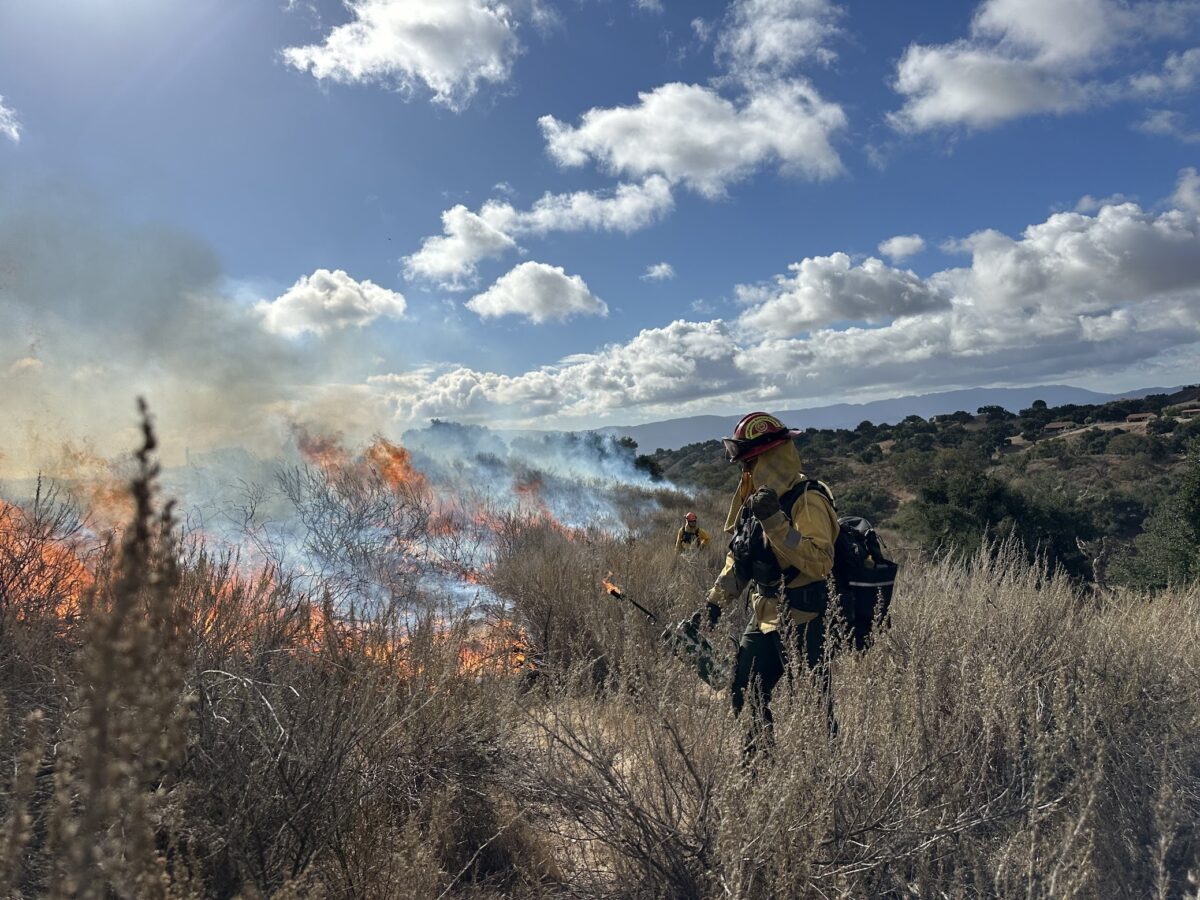
The Santa Barbara County Fire Department conducted a prescribed burn on Sedgwick Reserve Saturday, November 8th through Monday, November 10th. This controlled burn is part of a Vegetation Management Program (VMP) developed in collaboration with SB County Fire to reduce fuels and the risk of severe wildfire, promote native plant and animal diversity, and provide unique research and educational opportunities. Approximately 150 acres of sage and oak understory were burned.
The prescribed burns were near the Woodstock-Reserve boundary on the southwestern side of Sedgwick Reserve to increase fire safety for properties neighboring the reserve. The plots were prepared with bulldozers, hand lines, and tree trimming.
Controlled, low-intensity fires (known as prescribed burns) help protect property and communities by reducing fuels, wildfire intensity, and smoke pollution. Read more about prescribed fire here. These burns are part of Santa Barbara County Fire’s and Sedwick Reserve’s efforts to protect the greater Santa Ynez community.
Local residents received notifications from the Air Pollution Control District (APCD) as we neared the burn window. If you have any questions, please contact the Santa Barbara County Fire Department Vegetation Management Unit at (805) 681-5500.

To learn about past prescribed burns and related research at Sedwick visit the following links:
Recorded Presentations on Prescribed Fire, Wildfire, and Research at Sedgwick Reserve
Prescribed Burning at Sedgwick Integrates Community Objectives and Research Advances
2023 TREX Burn and NASA Firesense Project
Fire Research Continues at Sedgwick Reserve: Researchers collect pre-burn data for the TREX prescribed burn
About Fire Research at Sedgwick Reserve
Sedgwick Reserve is a hub for comprehensive fire research, encompassing a diverse array of scientific disciplines. Researchers from various fields conduct studies at Sedgwick, focusing on prescribed fire through several key areas:
- Fire Ecology: Investigations focus on how fires interact with species and ecosystems, including fuel dynamics, fire behavior, and ecological impacts.
- Fuels and Fire Behavior: Research into the characteristics of combustible materials and their influence on fire dynamics.
- Restoration and Remediation: Studies aimed at rehabilitating fire-affected areas and evaluating methods for ecosystem restoration.
- Remote Sensing: Utilizing advanced technologies to monitor fire conditions and behavior.
- Meteorology: Research into the importance of heatwaves amongst different fire severities and impacts of the fire on energy budgets.
- Hill Slope Hydrology and Geomorphology: Examining how fire impacts water flow and landscape changes.
- Biogeochemistry and Soil Science: Analyzing the effects of fire on soil properties and biogeochemical cycles.
Ongoing research includes:
- Pre-burn Data Collection: Gathering baseline data on vegetation structure, composition, and wildlife monitoring.
- Monitoring and Evaluation: Tracking changes in vegetation, fuels, fire behavior, and fire severity through permanent plots.
- Additional Advanced Measurement: Planned studies encompass vegetation structure and composition, LIDAR and multispectral imagery, surface and near-surface temperatures, live fuel moisture, soil temperature profiles, oak survival, fuel characterization, fire behavior modeling, wildlife activity, and RHESSys modeling of carbon and water fluxes pre- and post-burn.
